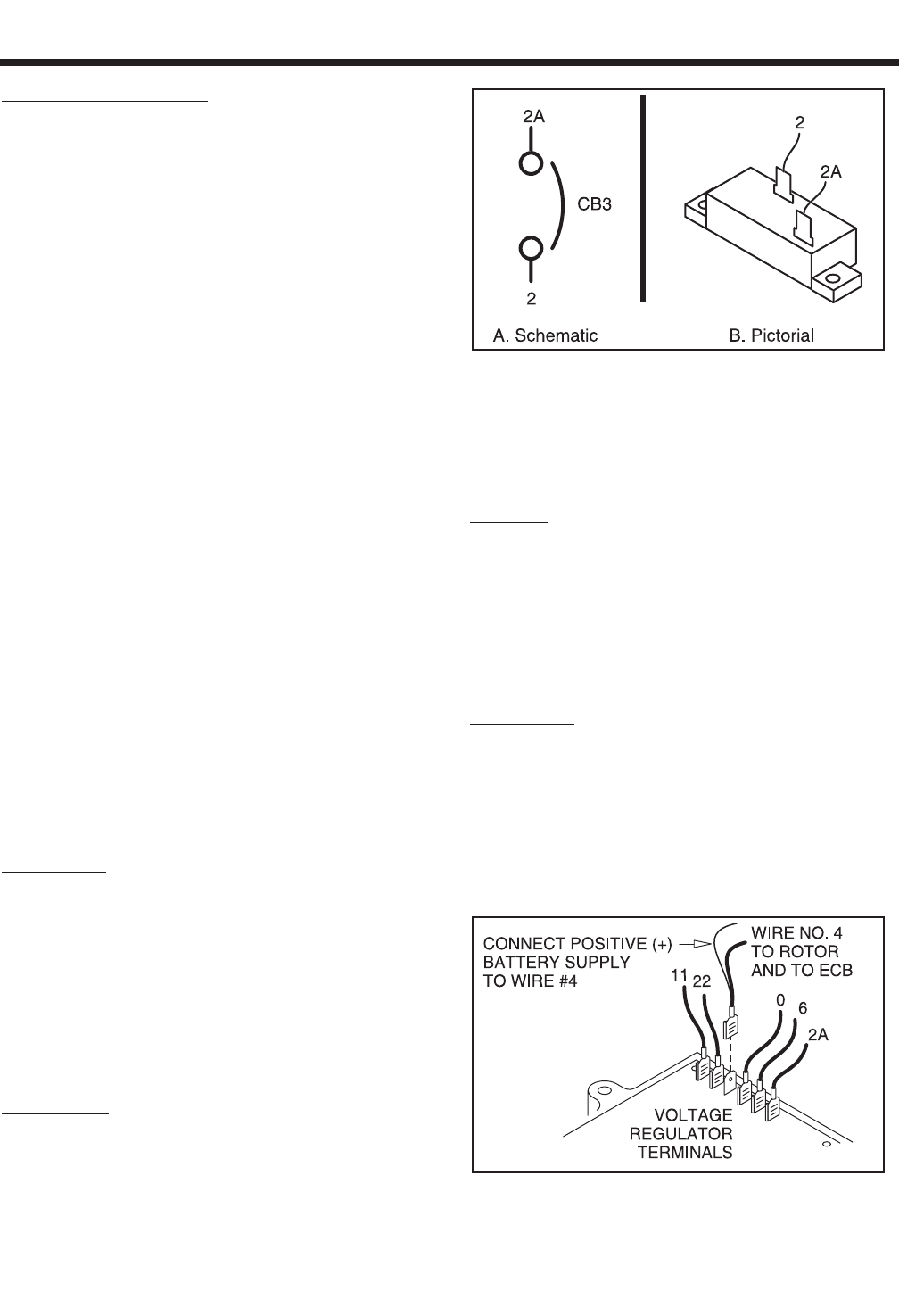SSeeccttiioonn 77
DDIIAAGGNNOOSSTTIICC TTEESSTTSS
GOVERNOR ADJUSTMENT
1. Loosen the GOVERNOR CLAMP BOLT.
2. Push Spring end of GOVERNOR LEVER clockwise to wide
open throttle position of lever.
a.Hold the GOVERNOR LEVER at wide open
throttle and, with a pair of pliers, rotate the
GOVERNOR SHAFT fully clockwise (CW). Use
a minimum amount of force against the gover-
nor shaft.
b.While holding the GOVERNOR SHAFT fully
clockwise and the GOVERNOR LEVER at wide
open throttle, tighten the GOVERNOR CLAMP
BOLT to 70 inch-pounds (8 N-m).
3. Start engine, let it stabilize and warm up at no-load.
4. Turn the ADJUSTER NUT to obtain a frequency reading of 62
Hertz.
5. Determine if the GOVERNOR SPRING is properly located in
the slot of the GOVERNOR LEVER as follows:
a.If droop is excessive, move the GOVERNOR
SPRING down one slot on LEVER.
b. For greater stability, move the GOVERNOR SPRING up one
slot on LEVER.
6. After repositioning the SPRING on a LEVER slot, recheck fre-
quency reading and, if necessary, readjust ADJUSTER NUT to
obtain 62 Hertz at no-load.
7. When frequency is correct at no-load, check the AC voltage
reading. If voltage is incorrect, the voltage regulator may
require adjustment. See “VOLTAGE ADJUSTMENT,” Page 10.
TEST 3- TEST EXCITATION CIRCUIT
BREAKER
DISCUSSION:
This circuit breaker (CB3) is normally closed and self-
resetting. It will open in the event of excessive current
from the Stator excitation (DPE) winding. The circuit
breaker should re-close or reset automatically after it
cools down (takes approximately two minutes).
When the breaker (CB3) is open, excitation current to
the Regulator (and to the Rotor) will be lost. The unit's
AC output voltage will then drop to a value that is
commensurate with the Rotor's residual magnetism
(about 5-12 volts AC). This test will determine if the
breaker has failed in its open position.
PROCEDURE:
Note: After running the unit, allow two minutes for
the breaker to reset.
1. Set a volt-ohm-milliammeter (VOM) to its “Rx1” scale and zero
the meter.
Figure 7-2. – Excitation “DPE” Circuit Breaker
2. In the generator panel, locate the excitation circuit breaker.
Disconnect Wire 2 and Wire 2A from the breaker terminals.
3. Connect the meter test leads across the two circuit breaker
(CB3) terminals. The meter should indicate “continuity”.
RESULTS:
1. If the meter did NOT read “continuity”, replace the excitation
(DPE) circuit breaker (CB3), and go to Test 4.
2. If “continuity” was indicated, go to Test 4.
TEST 4- FIXED EXCITATION TEST/ROTOR
AMP DRAW
DISCUSSION:
The fixed excitation test consists of applying battery
voltage (12 VDC) to the Rotor windings. This allows
that portion of the excitation circuit between the
Voltage Regulator and the Rotor (including the Rotor
itself) to be checked as a possible cause of the prob-
lem. When battery voltage is applied to the Rotor, the
resulting magnetic field around the Rotor should
induce a Stator power winding voltage equal to about
one-half the unit's rated output voltage.
Figure 7-3. – Fixed Excitation Test
Page 39
